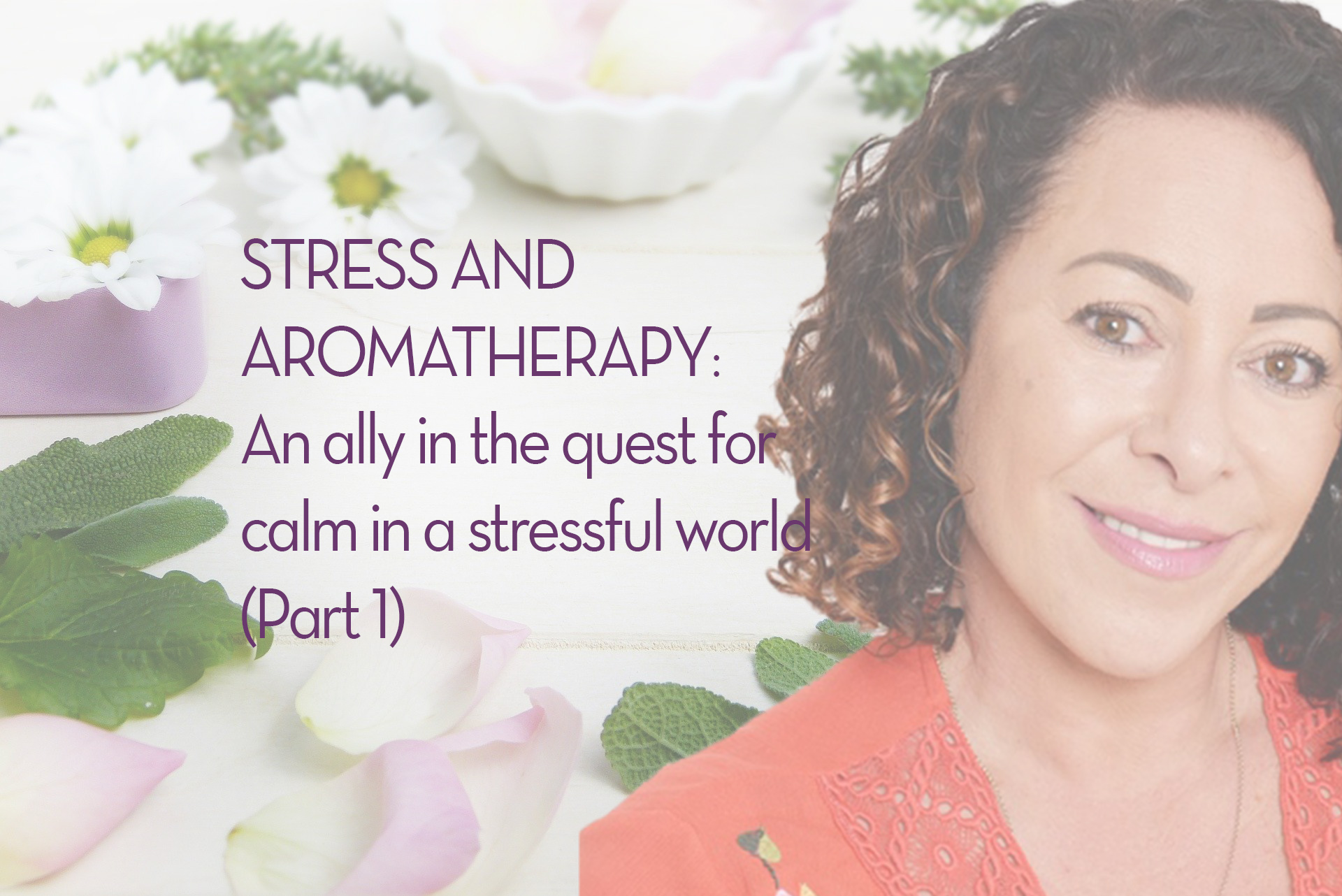Beauties, we’re excited to share this post with you from Aromatherapist and founder of Inner Senses, Lisa Basso! With over 25 years experience as a qualified (ISPA, IFA & IHBC) and practising Aromatherapist, Lisa is passionate about wellbeing and uniting mind body and spirit through the power of aromatherapy. In this two-part feature, Lisa is talking about how Aromatherapy and Essential oils have long been acknowledged for helping us with many health difficulties and ailments which have come to be associated with fast-paced, stressful lifestyles of the modern-day…. how they work on a deeper level.
Stress; hands up if you’ve never experienced its physical or emotional symptoms.
I’m surmising that not a single reader has raised a hand.
Stress in all its forms is so much a part of everyday life, transcending age, class, ethnicity, gender, culture, profession and every other categorization that exists. Perceptions of stress vary greatly and there are many factors which impact upon an individual’s experience of stress; including social, cultural, geographical, biological and individual differences.
This said, one fact is unequivocal; stress is the biggest single threat to our physical and mental health and wellbeing
Of course, we aren’t talking here about the fundamental Fight or Flight response. Our ability to perceive danger and quickly act accordingly is a deeply primitive mechanism that enables our survival; when we face something threatening to our wellbeing or existence our emotions are heightened. Fear and anxiety automatically kick in as we assess what we should do, and this is necessary. But what when we are simply gripped with anxiety at the very thought of the school run or other daily tasks; unable to sleep, despite physical exhaustion, because we’re lying in bed with racing thoughts and unpleasant feelings?
What do we do when the healthy, life-conserving type of stress become unhealthy, detracting from our quality of life, and can Aromatherapy help in minimising the symptoms of stress?
Aromatherapy can be broadly defined as ‘a holistic approach to wellbeing based on the specialised use of aromatic essential oils derived from plants for the purpose of improving ones health’. The most common method of use for essential oils (EO) is in massage, but there are other excellent methods, such as inhalations (great for colds/congestion/coughs etc), hip baths/sitz baths (perfect for cellulite/oedema/lower back and hip pain etc), compresses (ideal for swellings/ injuries/aches and pains etc) and numerous other methods of use.
Aromatherapy has long been acknowledged as having the potential to help us with so many of the health difficulties and ailments which have come to be associated with the fast-paced, often stressful lifestyles of the modern day. Aromatherapy is often referred to as a holistic therapy, meaning it works on the ‘whole’ i.e. physical, mental, emotional and spiritual levels, taking into account the myriad of factors that affect the specific individual and consequently their needs.
More than just an aroma
One of the most basic yet frequently asked questions I encounter is “how can an oil that smells help peoples’ health?” Often, and understandably, people who don’t know of aromatherapy compare it to other things such as smelling a perfume. But aromatherapy is far more than ‘just a smell’ and over the past three decades in particular, the efficacy of EO’s in promoting good health has been researched – albeit often without as much scientific rigor as many would like – and much is now understood about how EO’s take their effect physically, emotionally and mentally.
It’s important to understand that the effects of pure essential oils on emotions and the psyche are more than just imagined or ‘all in the mind’. We begin to understand this when we take a closer look at the brain’s complicated limbic system; an area so associated with memories and feeling that it is often referred to as our ’emotional brain’. Here, within the limbic system, lies the olfactory bulb (olfaction: relating to the sense of smell), which has intimate access to the hippocampus, which is responsible for associative learning, and the amygdala which processes emotion. Through the psychological process of odour association, EO’s can trigger memories and influence moods.
These odour associations operate very much on a subconscious level initially. For example, someone may smell Lavender essential oil and take an instant dislike to it as the aroma reminds them of a strict teacher from their childhood. Another person may smell the same Lavender fragrance and instantly love the aroma and feel uplifted, as they are reminded of their favourite aunt, or of sunny days in the garden where they played as a child. This explains why, in aromatherapy, we must never adopt a ‘one size fits all’ approach to the use of EO’s and should always be guided by a person’s likes and dislikes, limited only by the contraindications for that particular EO.
By Lisa Basso
Check out part two where Lisa is talking more about how EO’s can be helpful in combatting and alleviating so many diverse conditions and some of her favourite blends for stress and feelings of anxiety and tension.









Leave A Comment